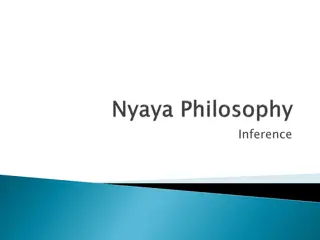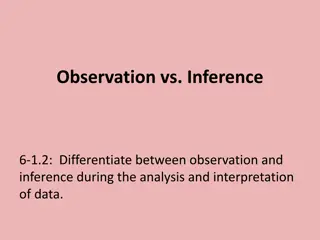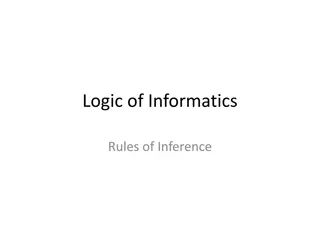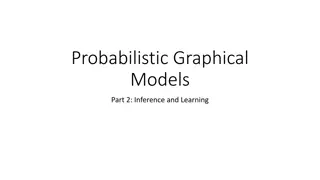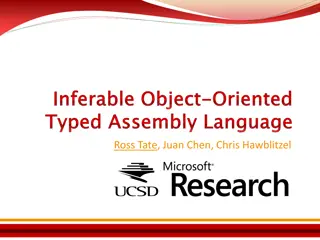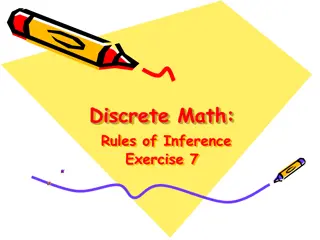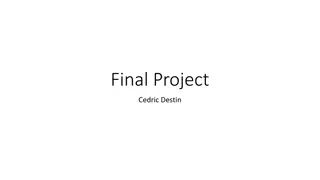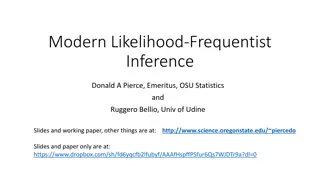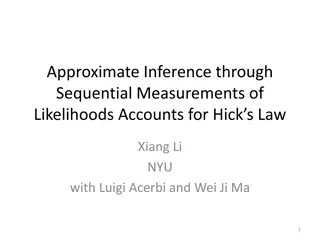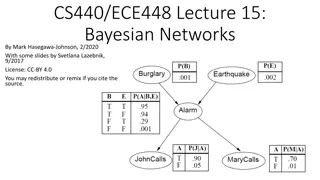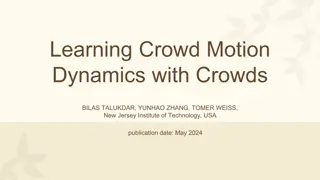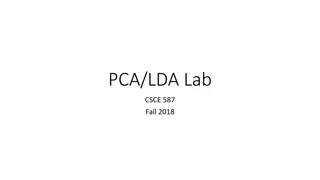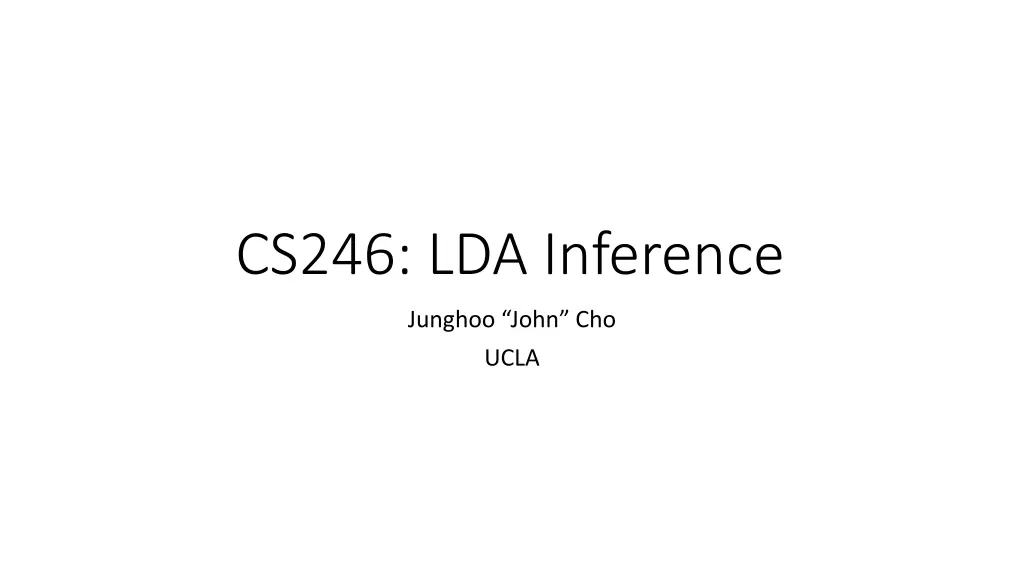
Monte Carlo Methods and Gibbs Sampling in Topic Inference
Explore the concepts of Monte Carlo methods and Gibbs sampling in the context of topic inference, specifically focusing on Latent Dirichlet Allocation (LDA) within text analysis. Learn how these techniques are used to generate topic-word vectors, document-topic vectors, and assign topics to words in documents. Understand the process of maximizing corpus probability through optimization and Monte Carlo simulations to achieve consistent results.
Download Presentation

Please find below an Image/Link to download the presentation.
The content on the website is provided AS IS for your information and personal use only. It may not be sold, licensed, or shared on other websites without obtaining consent from the author. If you encounter any issues during the download, it is possible that the publisher has removed the file from their server.
You are allowed to download the files provided on this website for personal or commercial use, subject to the condition that they are used lawfully. All files are the property of their respective owners.
The content on the website is provided AS IS for your information and personal use only. It may not be sold, licensed, or shared on other websites without obtaining consent from the author.
E N D
Presentation Transcript
CS246: LDA Inference Junghoo John Cho UCLA
LDA Document Generation Model For each topic z Pick the word probability vector ?(?|?) s by taking a random sample from Dir( , , ) For every document d The user decides its topic vector ?(?|?) s by taking a random sample from Dir( , , ) For each word in d The user selects a topic z with probability ?(?|?) The user selects a word w with probability ?(?|?) At the end, we have ?(?|?): topic-word vector for each topic ?(?|?): document-topic vector for each document Topic assignment to every word in each document 2
LDA as Topic Inference Given a corpus ?1: ?11,?12, ,?1? ??: ??1,??2, ,??? Find ?(?|?),?(?|?),???that are most consistent with the given corpus Q: What does consistent mean? A: MLE. Find the values that maximizes the corpus probability ? ? ? ? ? = ???(? ? ??;?) ???(? ? ??;?) ?(??,?|??,?)?(??,?|??) ?=1 ?=1 ?=1 Q: How can we compute such ?(?|?),?(?|?),???? A: Solving optimization problem. Use Monte Carlo method together with Gibbs sampling 3
Monte Carlo Method (1) Class of methods that compute a number through repeated random sampling of certain event(s). Q: How can we compute ?? 4
Monte Carlo Method (2) 1. Define the domain of possible events 2. Generate the events randomly from the domain using a certain probability distribution 3. Perform a deterministic computation using the events 4. Aggregate the results of the individual computation into the final result Q: How can we take random samples from a particular distribution? 5
Gibbs Sampling Q: How can we take a random sample ? from the distribution ?(?)? Q: How can we take a random sample (?,?) from the distribution ?(?,?)? Gibbs sampling Given current sample (?1, ,??), pick a random dimension ??, and take a random value for ?? assuming the current values for all other dimensions ?1, ,?? In practice we sequentially iterate over each dimension 6
Markov-Chain Monte-Carlo Method (MCMC) Gibbs sampling is in the class of Markov Chain sampling Next sample depends only on the current sample Markov-Chain Monte-Carlo Method Generate random events using Markov-Chain sampling and apply Monte- Carlo method to compute the result 7
Applying MCMC to LDA Let us apply Monte Carlo method to estimate LDA parameters. Q: How can we map the LDA inference problem to random events? A: Focus on assigning topic ??? to each word ???. Event: Assignment of the topics {???} to all ??? s. The assignment should be done according to the probability ?({???}|?) of the LDA model Q: How can we sample according to the probability distribution of ?({???}|?) of the LDA model? 8
Gibbs Sampling for LDA 1. Start with initial random assignment of ??? 2. For each ???: 1. Sample a new ??? value randomly according to ?(???|{? ??},?) 3. Repeat many times Q: What is ? ??? ? ??,?)? 9
? ???= ? {???},?)? ????? + ? ?=1 (???+?) ????+? ?=1 (????+?) ? ???= ? {? ??},?) ? ? ???: how many times the word w has been assigned to the topic z ???: how many words in the document d have been assigned to the topic z Q: What is the meaning of each factor? 10
LDA with Gibbs Sampling For each word wij ????? + ? ?=1 (???+?) ????+? ?=1 (????+?) Assign to topic t with probability ? ? For the prior topic ?? of wij, decrease ?????? and ????? by 1 For the new topic ??of wij, increase ??????and ????? by 1 Repeat the process many times At least hundreds of times Once the process is over, we have zij for every wij nwz and ndz ???+ ? ?=1 ???+ ? ?=1 (???+ ?) ? ? ? = ? ? ? = ?(????+ ?) ? 11
Example Result from LDA TASA corpus 37,000 text passages from educational materials collected by Touchstone Applied Science Associates Set T=300 (300 topics) 12
LDA Algorithm Simulation Two topics: River, Money Five words: river , stream , bank , money , loan river stream bank money loan River 1/3 1/3 1/3 Money 1/3 1/3 1/3 Generate 16 documents by randomly mixing the two topics and using the LDA model 15
Generated Documents and Initial Topic Assignment before Inference First 6 and the last 3 documents are purely from one topic. Others are mixture White dot: River . Black dot: Money 16
Topic Assignment After LDA Inference First 6 and the last 3 documents are purely from one topic. Others are mixture After 64 iterations 17
Inferred Topic-Term Matrix Model parameter river stream bank money loan River 0.33 0.33 0.33 Money 0.33 0.33 0.33 Estimated parameter river stream bank money loan River 0.25 0.4 0.35 Money 0.32 0.29 0.39 Not perfect, but very close especially given the small data size 18
LSI vs LDA Both perform the following decomposition term term topic topic X = doc doc SVD views this as matrix approximation LDA views this as probabilistic inference based on a generative model Each entry corresponds to probability : better interpretability 19
LDA as Soft Classification Soft vs hard clustering/classification After LDA, every document is assigned to a small number of topics with some weights Documents are not assigned exclusively to a topic Soft clustering 20
LDA: Application to IR [Wei & Croft 2006] Smooth document unigram language model ? ? ? with Corpus language model: ? ? ? =??? LDA-based model: ????? ? = ?=1 ? ? ? = 1 ? ? ? Expand set of relevant terms through related topics Compared to corpus-smoothing only, 10-20% improvement reported ? ? ? ? ? ?(?|?) ???,? + ???? ? ?+ ? ?=1 ? ? ? ?(?|?) 21
pLSI and NMF In general, pLSI can be viewed as matrix factorization with constraints that factored matrices may have values between [0, 1] only Nonnegative matrix factorization (NMF): many algorithms exist term topic term topic X = doc doc 22
Summary Probabilistic Topic Model Generative model of documents Latent Dirichlet Analysis (LDA) Nonnegative matrix factorization Statistical parameter estimation for LDA Multinomial distribution and Dirichlet distribution Monte Carlo method Gibbs sampling Markov-Chain class of sampling Language model smoothing through LDA model 23
References [Wei & Croft 2006] Xing Wei and W. Bruce Croft: LDA-Based Document Models for Ad-hoc Retrieval in SIGIR 2006 24

